Artist Interviews 2021
Hera of Herakut 
By Julia Siedenburg
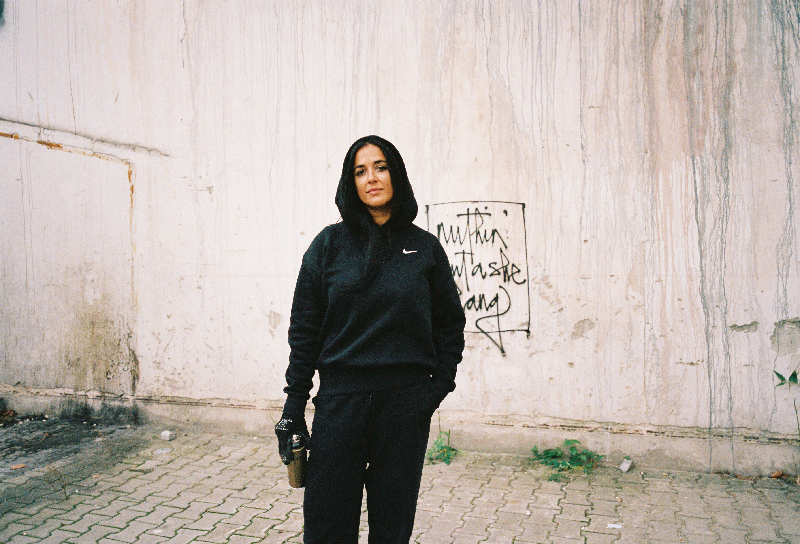
Hera of Herakut is an unbelievable artist I stumbled upon by chance. A local Berlin girl and fellow German speaker whose pieces I'm in awe of.
With her favorite tool being the spray can, she creates rather darker almost sad pensil looking illustrations of young children with animal head coverings and quotes.
She travels for her murals to places like Germany and the UK all the way to Russia and Brazil.
The details of the faces of the children and the animals are unbelievable. There is so much life in her art, so much emotion, so much creativity. Some are playful, some serious, others fantastical.
Even with her extremely busy schedule, Hera was so kind to squeeze us in and answer us these few questions that I was dying to ask her, based on my love for her art.
Dear readers, I encourage you to follow and celebrate Hera and let yourself get pulled into her artwork.
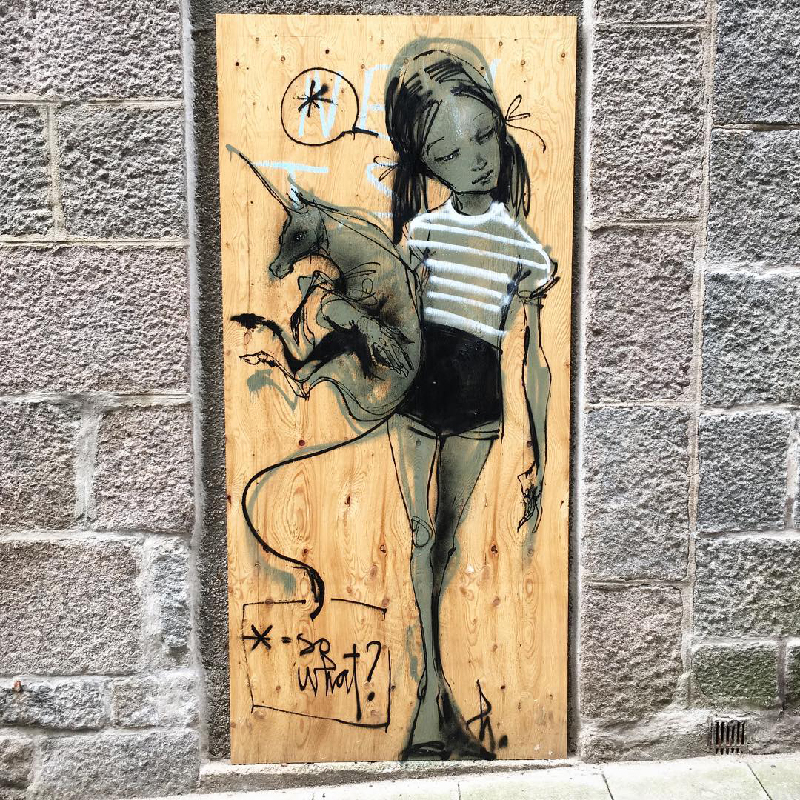
What does art mean to you? How did art change for you over time? Help us to get to know you.
Today art is my preferred way of communication. I can express my thoughts on any subject matter and through it out there on any surface anywhere in the world, and my art then builds a bridge to like minded people. This is quite magical to me, because for the longest time I was struggling to relate to anyone. In fact, throughout childhood I was so timid and frightened of the other kids, that drawing was my mental and physical safe-place. By the time I entered school my handiwork had morphed into some kind of currency, where children lined up to get their personalized Teenage Mutant Hero Turtle or He-Man sketch. It wasn’t until much later, until I was in my 20s, when I actually started to create my own style, my own visual vocabulary. Something that I did not to please others but solely for me. That is when art became more than escapism. It became my way to get out there and get in touch with the world.
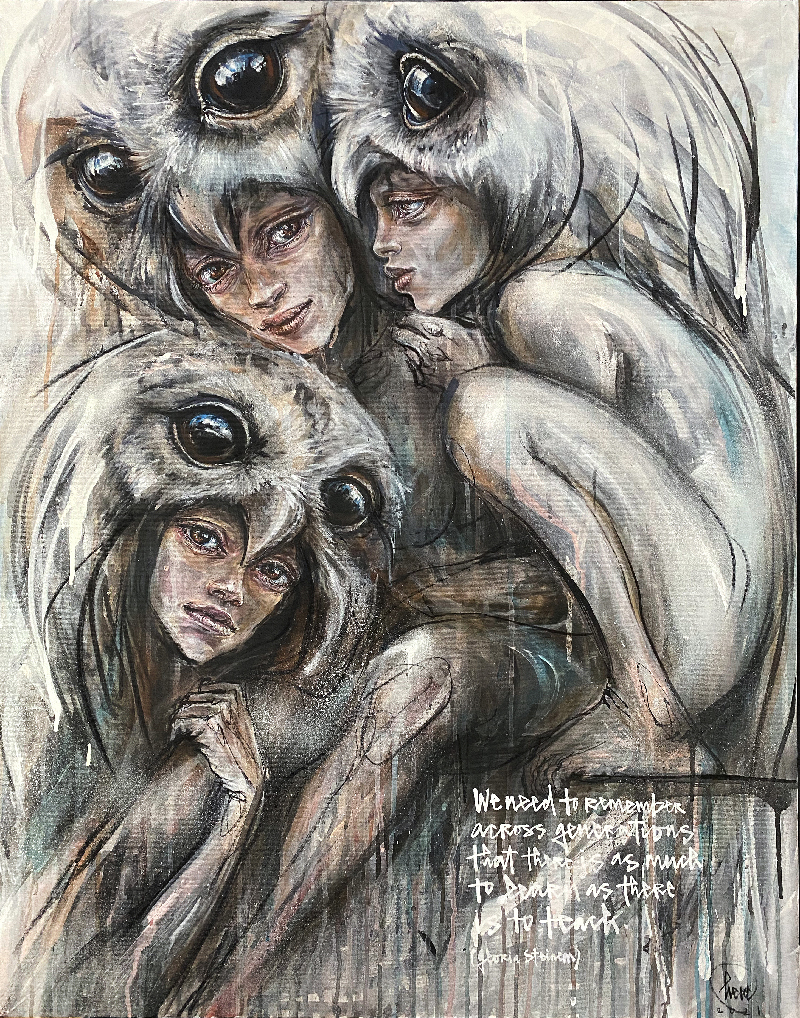
Describe your process. How long does it take you to finish a piece and where can they be found?
I paint murals much faster than I finish a canvas piece, as the spray can, which is my favorite tool, is a little bit tricky to handle on a smaller scale. The biggest facade Akut and I have ever taken to was the 223 feet tall building in a suburb of Moscow, Russia, which we painted in six or seven days in 2019. Other large walls, like the 2012 mural in Miami or the collaboration mural with M-City in Sao Paulo, Brasil, in 2015, were also finished within that time frame. Those big pieces are generally way less detailed than any canvas artwork, and you are much more under pressure to finish it before the weather conditions change, or the rental fees for those boom lifts explode.
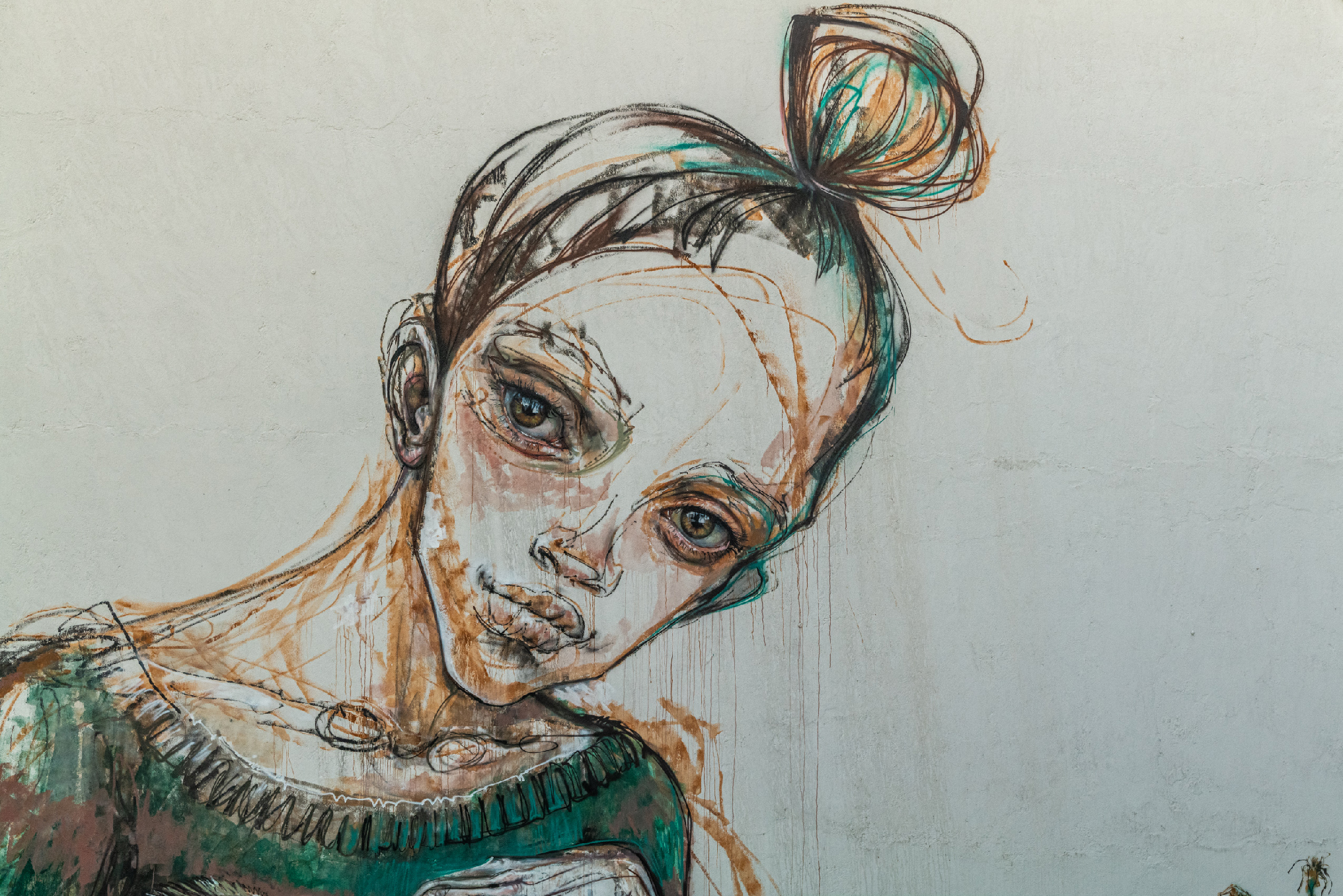
How do you choose your walls? How do you choose your subjects? What is your artistic method?
When it comes to the choice of walls, the flatter the surface the better, which is my there are hardly any Hera or Herkamt pieces in the UK where brick wall buildings are more common than concrete ones. My method requires the use of a lift, as I need to sketch out the proportions using a telescope pole stick. I personally have never used a projector or grid. There is hardly ever a real sketch, more a rough idea which then takes shape. Freestyle is vital to my artwork. The figures come to life and somehow form into real characters with backstories, moods, a message they want to share. I sometimes think of this process as giving birth, but with me just being the midwife who helps out. The wall or canvas and the paint are the true parents. The story that comes to life is the child. I will do my best to deliver it, but I will eventually leave it, say goodbye and wish it well.
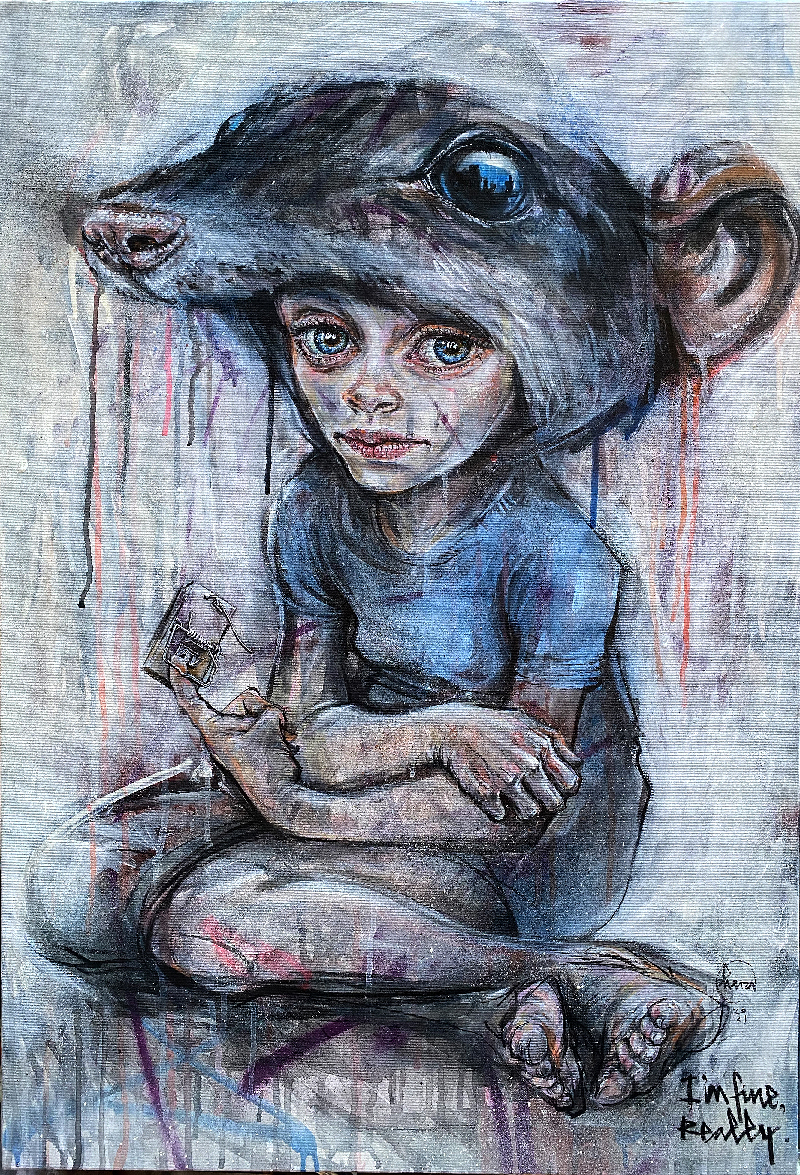
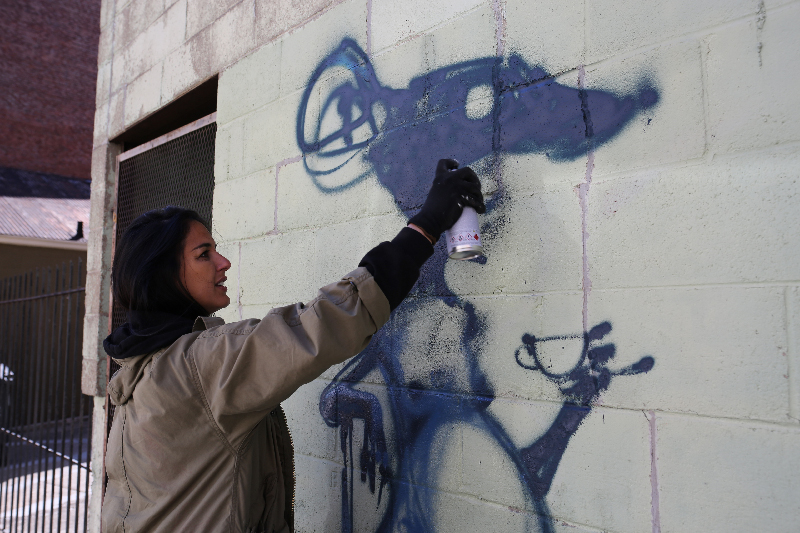
How do you choose your quotes? Do you write the poems yourself or does someone else write them?
In the early days of my graffiti career I developed my Hera-typography that became an important layer to the figurative images I created. The very first time I did that, I actually just quoted two guys who passed by when I was painting a female character. In a belittling tone they yelled something my way which ended up as the title of the piece. It said: „Look at the poor girl. She doesn’t even know how to hold the can right.“ Later I quoted lyrics a lot, then I also had a phase where I felt super inspired by the poet Jeffrey McDaniel who I had met years before I had ever painted outdoors. His language and thoughts were as twisted as my imagery, combining the most contrasting elements. It was a good and interesting mix. And I was stoked when Jeffrey came to the opening of our 2010 pop-up show in New York. Things got even crazier when he asked me to design the covert for his 2020 book „Island of Grief“. But one thing was always important to me, which had to do with crediting my source of inspiration. When I quote, you will find the author of that thought named on the artwork. If there is no mentioning of another artist, writer, musician or else, then the words are my own. I do think in poetry a lot. Most text in Herakut and Hera pieces are mine. They are the last bit of freestyle. They are usually added a moment before I’m heading out to the next wall in the next country.
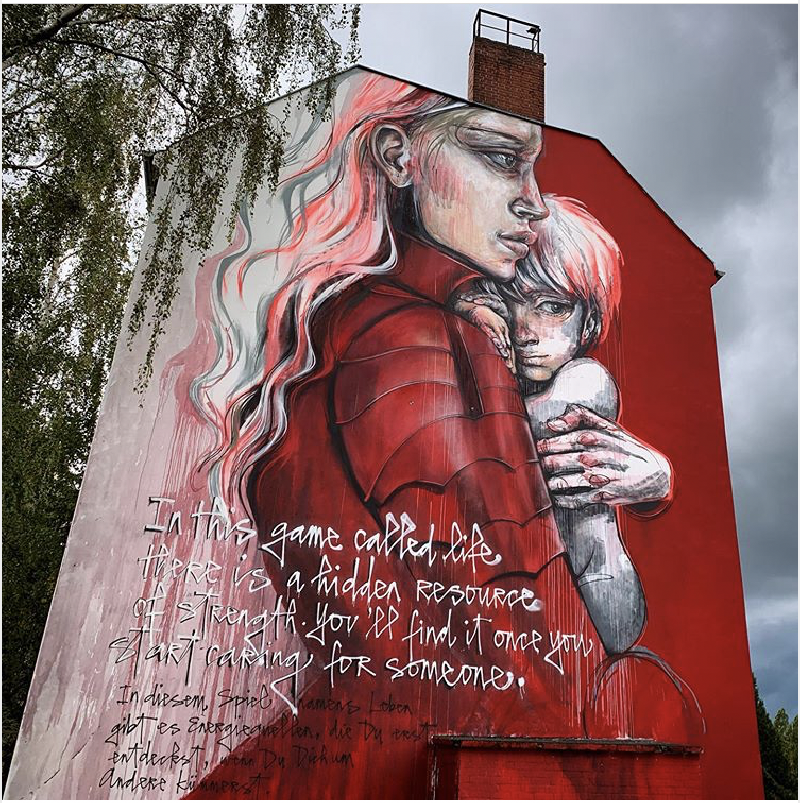
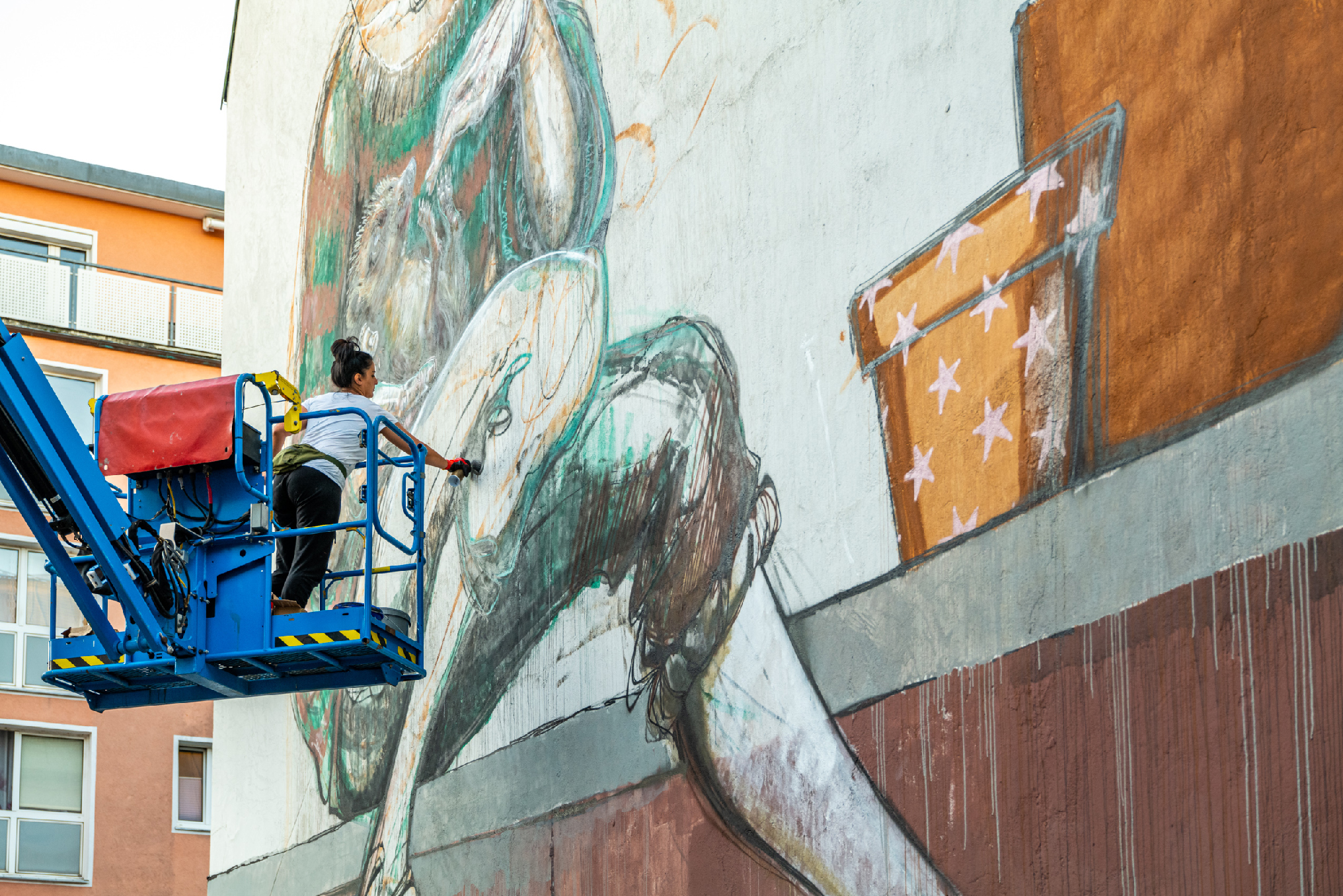
What is your message to the people?
The messages I’m leaving behind are the actual artwork. They are food for thought. The figures and their intense eyes are the bait. They draw in the attention of people passing by. The weird use of symbols, mostly by using animals to define the character traits of my protagonists, will make people wonder what the story is about. People will scan the composition for more clues. It's often like a relief to them, when they typography reveals a clear message. As I said, art is my way to communicate, so if it was up to me, I´d even add a playlist to each piece. Or the newspaper clipping or book or diary page that inspired the whole artwork in the first place.
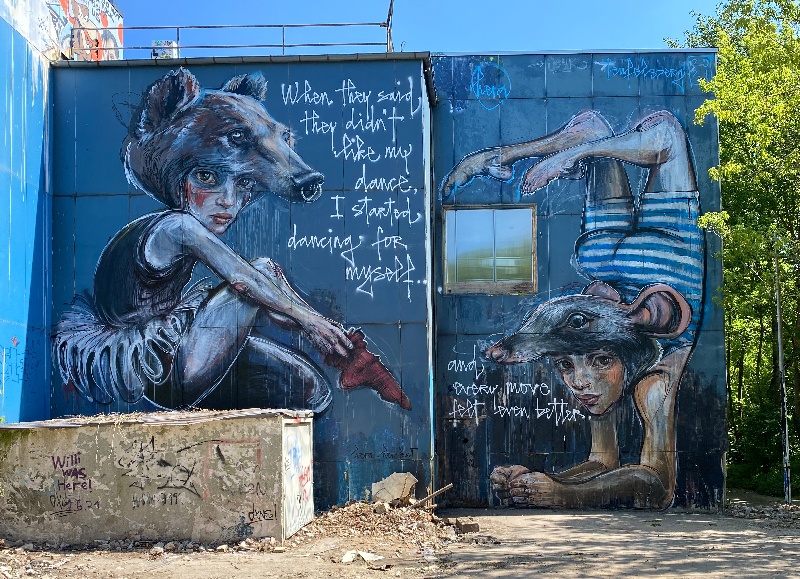
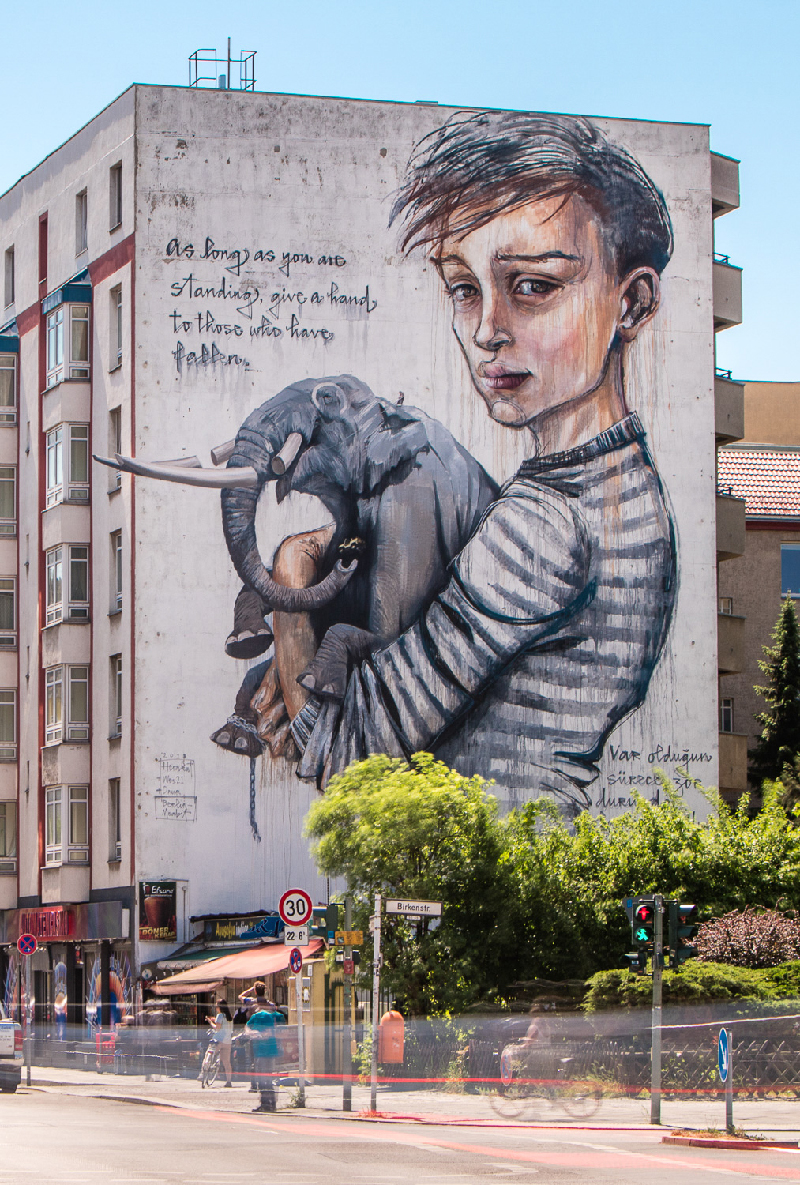
What is next?
In April, we will be celebrating the opening of the Urban Art Hotels “LIEBESBIER” in Bayreuth, where I am the curator and where over 50 street artists designed all of the rooms and outdoor areas.
This is a dream come true, because this international Line- up will definitely have influence on this normally small city in Bavaria. We are hoping to achieve a ripple-effect where from then on we are able to bring also the facades/fronts in the entire region to life.
Also very important: In July after a 2 year break, there will be the artistic overtake of the St. Pauli Stadium in Hamburg to collect money for the Water Charity VivaConAgua.
What’s special about this is that being able to curate this has been a huge dream of mine, as well. Not only because of the Line-up (where for the first time in their 10 year history the Millerntorgallery and womxn will be dominating) but also because I am building my Dancer/Performer friends into it, in order to make it a collaborative, genre-connected festival.
So as you can see, for me it is important to give back to the community first, to help build the way for new talents and then at some point I will be concentrating on my long term project: Graphic Novel.
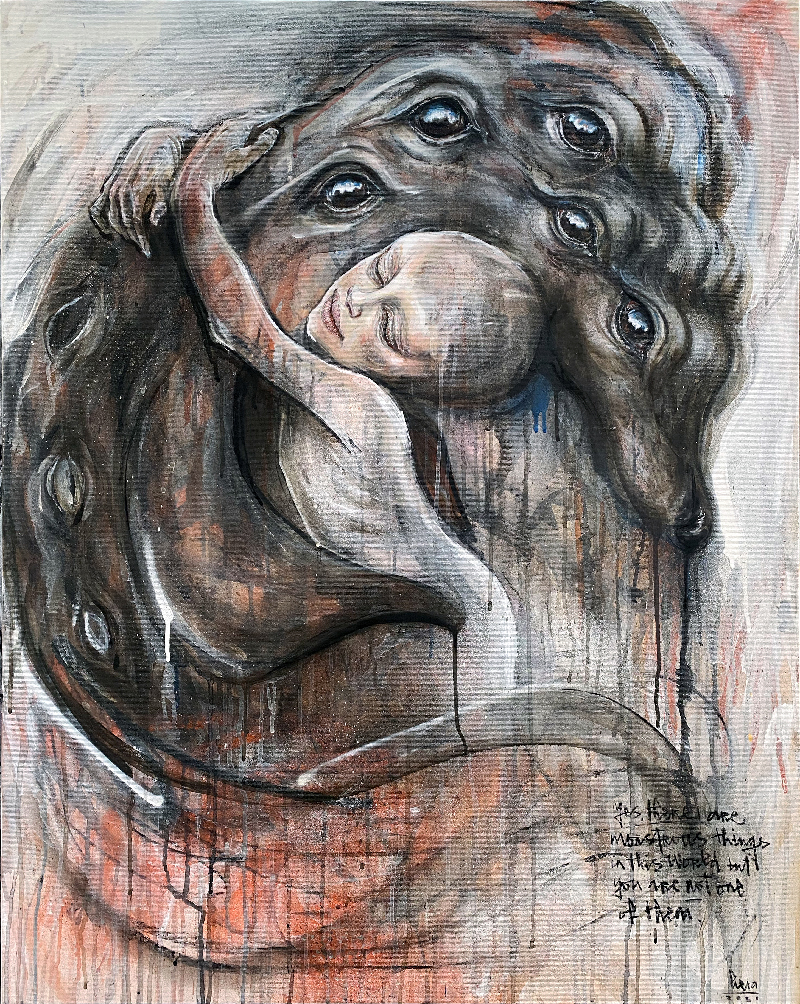
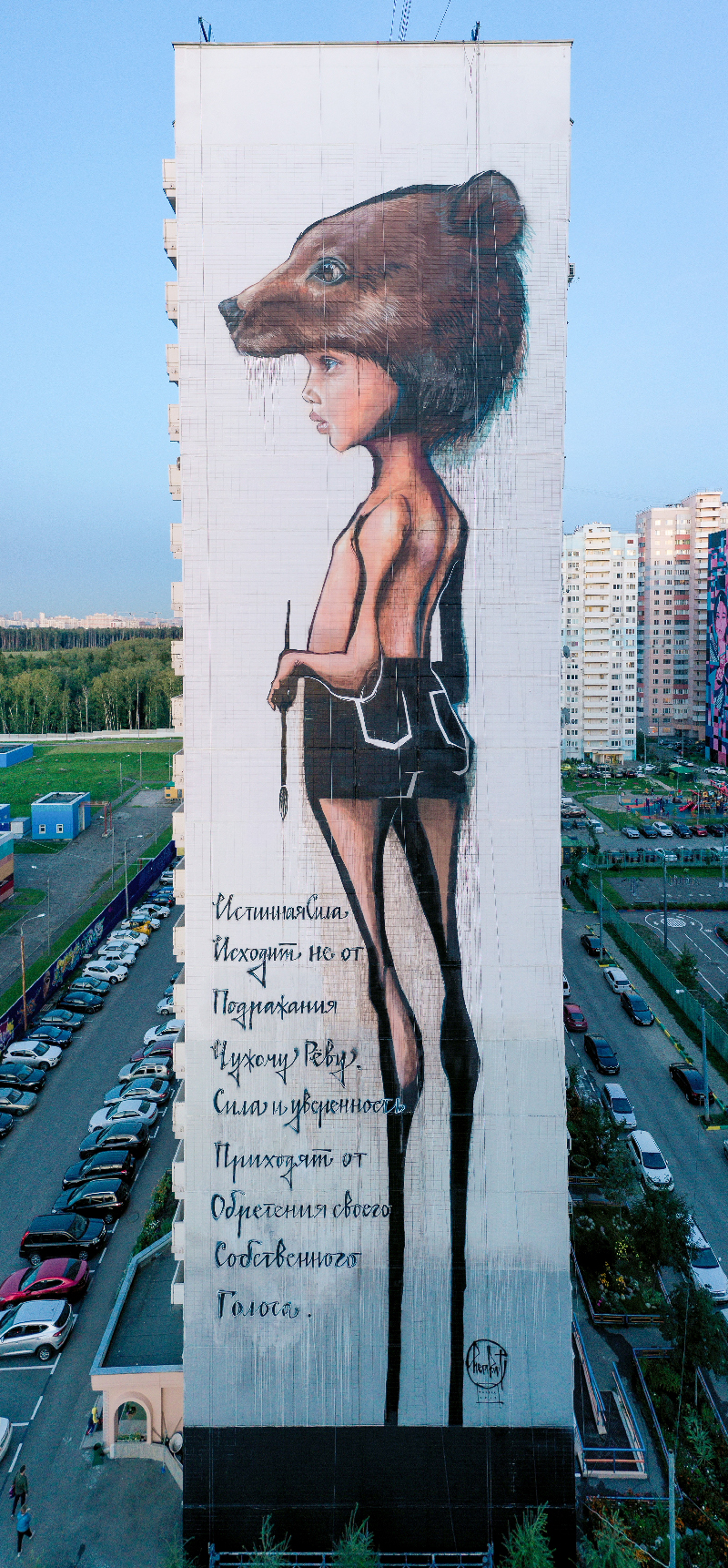
|
|

